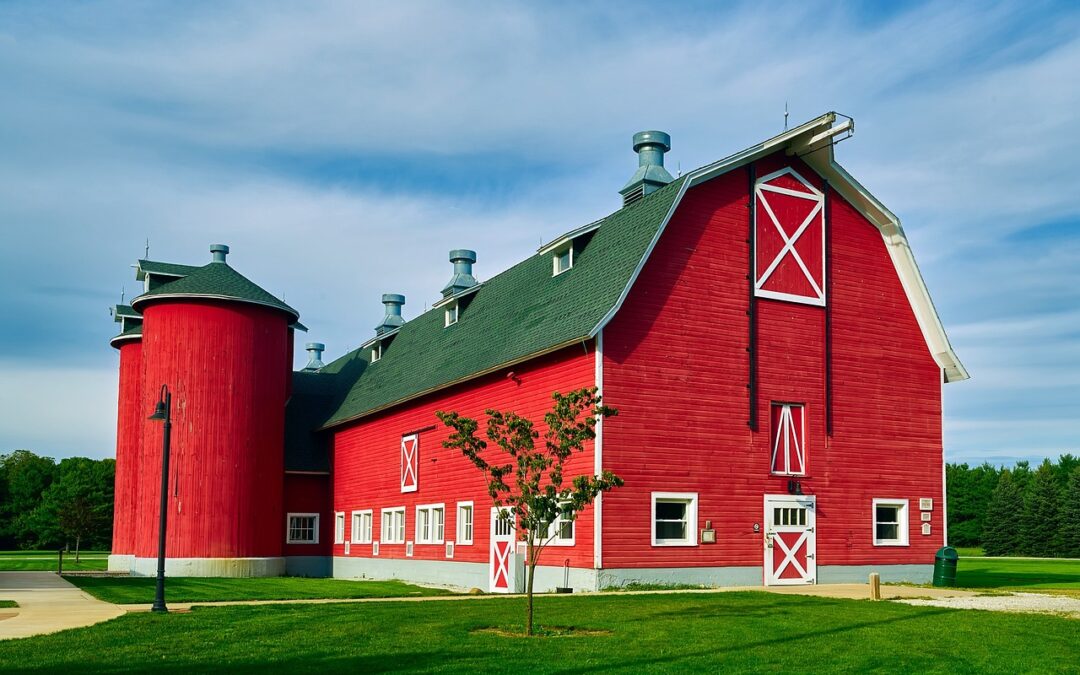From low taxes and an affordable cost of living to seasonal temperatures, Indiana has a lot to offer. If you’re moving to Hoosier State, it’s helpful to know some logistics, like the average climate and major modes of transportation. To help you with the transition, we’ve put together this one-stop guide for everything you need to know about moving to Indiana.
What is the Weather Like in Indiana?

Lake Michigan Ice and sunset by Steve Johnson is licensed with CC BY 2.0
No matter where you live in Indiana, you’ll experience all four seasons. In the summer, you can expect temperatures in the 70s or 80s during the day, though there can be periods of extreme heat. The hottest month in Indiana is typically July. In Indianapolis, the average high for this month is 85.2 degrees, according to the National Weather Service (NWS). In Chicago and Northwest Indiana, the average high in July is 84.5 degrees. The spring and fall seasons offer pleasant temperatures with some precipitation.
Indiana usually has a typical Midwestern winter, though the extent of the cold and snow may depend on where you live in the state. Northern Indiana experiences winters similar to Chicago, with the highest snowfall averages in December, January, and February. Indianapolis has similar snowfall averages, while cities further south in the state, like Evansville, usually get less snow. During the winter, average temperatures in Indiana fall between 30 and 40 degrees, though it’s not uncommon for the temps to drop further.
In Northwest Indiana, part of the Great Lakes region, lake effect snow can occur, caused by cooler air from Canada transferring across the warmer lake waters. If this happens, snow can fall at a rate of 2 to 3 inches per hour, according to the NWS. The average yearly snowfall amount in Chicago and Northwest Indiana is 38.4 inches.
What Are Taxes Like in Indiana?
A major perk of moving to Indiana is the state’s low tax rate. The Tax Foundation, an independent tax policy research organization, has ranked the state No. 9 on its latest State Business Tax Climate Index. Unlike most other states in the top 10, Indiana levies taxes in all major areas (corporate income, individual income, and sales), but it has lower rates than other states.
Indiana has a flat individual income tax rate of 3.23%, and the state plans to lower the rate further to 2.9% by 2029, according to an Associated Press report. The Indiana Department of Revenue also offers a number of credits you can claim on your tax returns to help you save money. In addition to a low individual income tax, the state has a 4.9% corporate income tax and a 7% state sales tax, the largest source of revenue for the state government.
When you pay property taxes in Indiana, the state caps the amount at 1% of the assessed property value of your primary home. You may also be able to claim some deductions on your property taxes, depending on the property and where you live. Your property taxes fund your county and city, school system, and other local government functions.
What is the Cost of Living in Indiana?
Along with low taxes, Indiana offers a lower cost of living compared with many other states. U.S. News and World Report ranks the state No. 6 in the nation for affordability, based on housing prices and general cost of living. In several major expense areas — such as groceries, utilities, transportation, and health — the Hoosier State has a lower cost of living than the national average, according to the demographic website Sperling’s Best Places. With affordable housing and expenses, you may have an easier time making ends meet in Indiana than in major cities, like Chicago, or other states.
Economy and Jobs in Indiana
Indiana has a strong economy with a variety of small and large businesses. Top industries in the state include aerospace and aviation, technology, life sciences, and transportation. Indiana also has a robust manufacturing industry. It’s second in the nation for overall automotive production, producing around 1.3 million cars and trucks annually. The automotive industry alone employs 116,000 workers in Indiana, and the state has the highest concentration of manufacturing jobs in the nation, according to the Indiana Economic Development Corp.
Regardless of your preferred industry, the job outlook in the state remains strong. Recent jobs reports indicate an increase in private-sector and non-farming jobs throughout Indiana. According to U.S. Census data, the average income per person is $32,537, while the median household income in Indiana is $61,944. For help finding a job in Indiana, you can access resources through the Indiana Department of Workforce Development.
Transportation in Indiana
The state motto of Indiana is the “Crossroads of America,” and for good reason: a hub of major interstates connects Indiana to the East and West coasts. Even-numbered interstates indicate east-west routes, increasing in number from south to north. For example, Interstate 64 is in Southern Indiana, and Interstate 94 is in Northern Indiana. Odd-numbered interstates are north-south routes. Some of the interstate highways in the state include:
- Interstate 65: This interstate connects Northwest Indiana to Indianapolis and continues south to the Indiana-Kentucky state line.
- Interstate 70: This road extends from Terre Haute to Richmond, connecting the state from east to west through Indianapolis.
- Interstate 80: I-80, which includes the Borman Expressway and Indiana Toll Road, runs east-west across Northern Indiana from Munster to Angola.
- Interstate 90: The tolled freeway, known as the Indiana Toll Road, extends east-west from Hammond to Angola.
In addition to interstates and highways, Indiana also offers four primary airports with commercial services. The state’s proximity to major cities in other states, such as Chicago and Cincinnati, means you may also use those airports to travel, depending on where you live. Primary airports in Indiana include:
- Indianapolis International Airport.
- Fort Wayne International Airport.
- South Bend International Airport.
- Evansville Regional Airport.
Find Your New Home in Northwest Indiana
With close proximity to Chicago and all the benefits the Hoosier State has to offer, Northwest Indiana provides a variety of opportunities. When you’re ready to make the move here, our friendly and experienced team at Steiner Homes can help you find the perfect home for your family. From Cedar Lake to Valparaiso, Northwest Indiana has many beautiful communities with first-class schools, parks, restaurants, shops, and more. Contact us today to learn more about the affordably priced homes for sale in Northwest Indiana. We look forward to welcoming you and your family to the Hoosier State.

